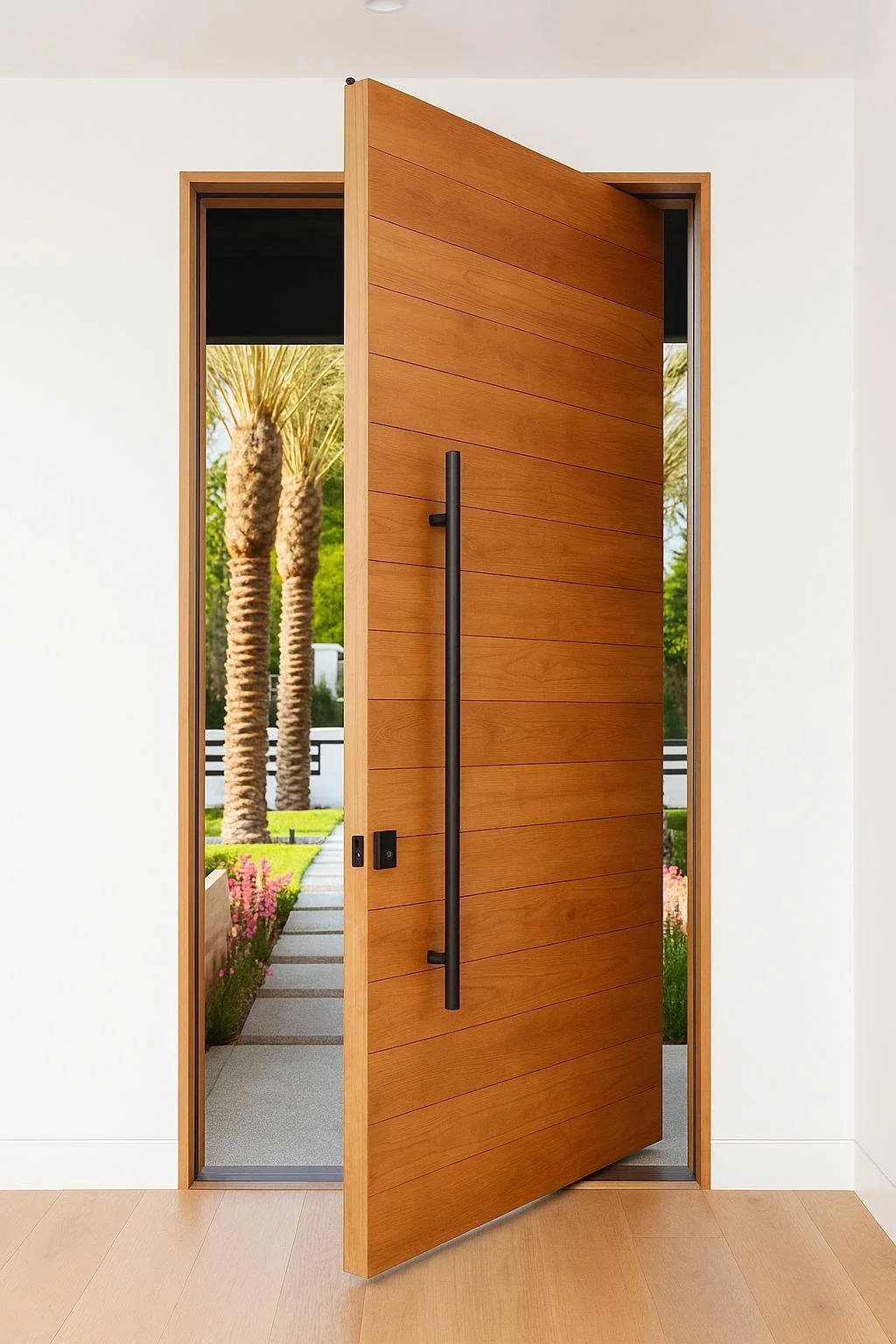The Rise of Pivot-Hinged Tall Entrance Doors in Modern Architecture.
By Ar. Rahul Roy.
In the evolving world of architecture, doors are no longer mere functional elements. They’re becoming powerful design statements — especially the pivot-hinged tall entrance door. From minimalist villas to luxury commercial spaces, these doors are making a grand entrance, quite literally.
What Is a Pivot-Hinged Door?
Unlike traditional doors that rely on side hinges, pivot doors rotate on a vertical axis, supported by pivot hardware mounted at the top and bottom of the door, slightly offset from the edge. This allows the door to pivot open smoothly with a distinctive floating motion.
Why Tall Height?
Tall doors — often extending 10 feet or higher — are used to:
Enhance verticality in façade design
Create a monumental feel right from the entrance
Blur boundaries between architecture and sculpture
Match the scale of double-height foyers or minimal modern exteriors
Together with pivot hardware, these tall doors feel effortless, despite their size and weight.
Key Benefits of Pivot-Hinged Tall Entrance Doors
Minimalist Design
No bulky hinges or frames. These doors often sit flush with walls, maintaining clean lines — ideal for contemporary and brutalist styles.
Smooth, Silent Operation
Premium pivot systems ensure near-frictionless motion. Some include hydraulic dampers or soft-close features, enhancing user experience.
Greater Door Widths Possible
Because the pivot point is internal, you can design wider and heavier doors than you can with side hinges — often without visible hardware.
Custom Materials
From natural wood and glass to metal cladding or even concrete panels — pivot doors can be fully customized to complement your palette.
Security and Automation
Modern systems include multi-point locking, smart access controls, and integration with home automation.
Where Are They Being Used?
Luxury Villas: As the ultimate first impression
Hotels & Resorts: For wow-factor lobbies and suites
Office Buildings: Sleek, high-end corporate entrances
Art Galleries: Statement doors as part of the exhibit
Architectural Considerations Before You Specify
Structural Load Handling
Ensure the floor and ceiling can take the point load from the pivot hardware — especially in tall doors.Wind and Weather Resistance
Use weather-stripped frames and select materials suitable for the local climate.Automation Needs
Plan for electrical points if the door includes motorized pivots or smart access.Accessibility & Safety
Consider offset pivots that create ample clearance or use center pivots for symmetry. Include safety glazing if using glass.
Final Thoughts
Pivot-hinged tall entrance doors are more than just trendy — they reflect a shift in how we perceive entryways. They combine function, form, and finesse to create an immersive architectural experience right from the threshold.
As materials, hardware, and design sensibilities evolve, expect to see these doors becoming a staple in future-forward designs — bold, beautiful, and unforgettable.


